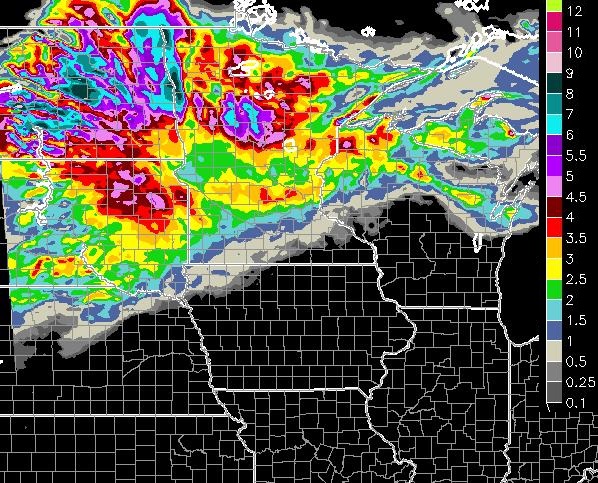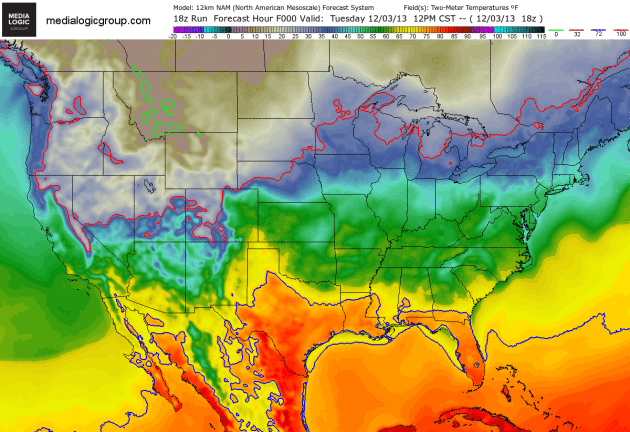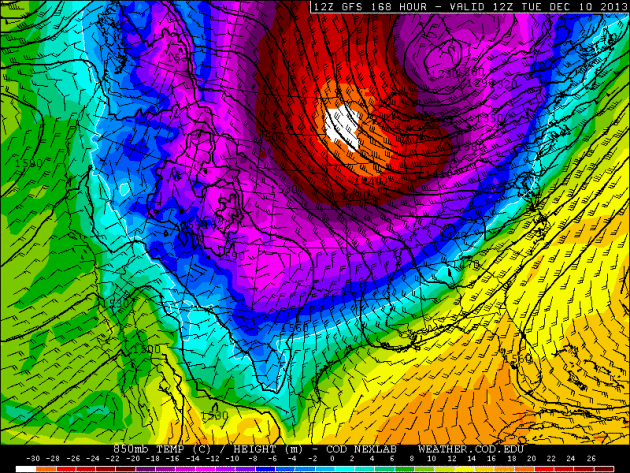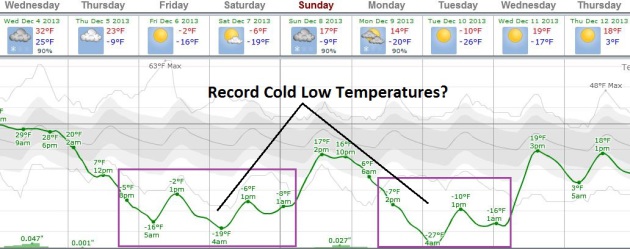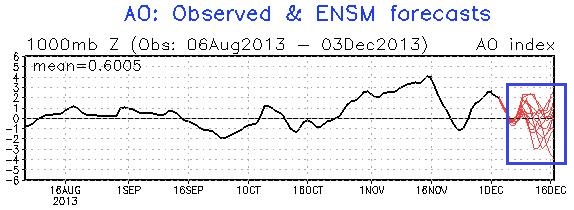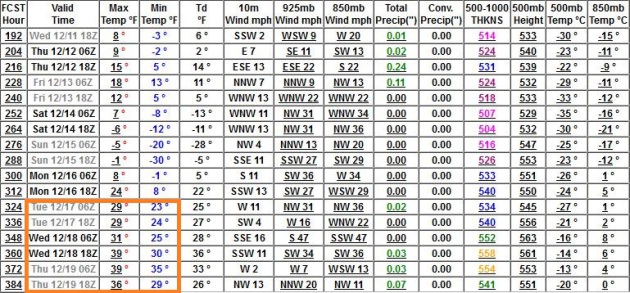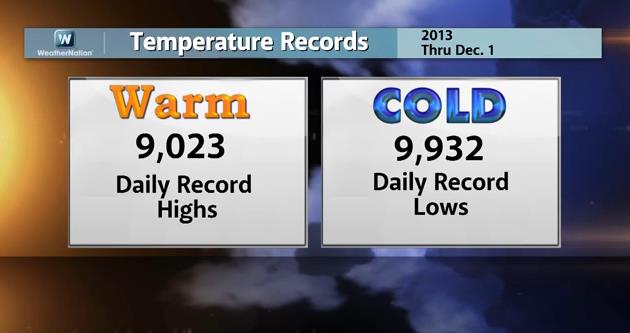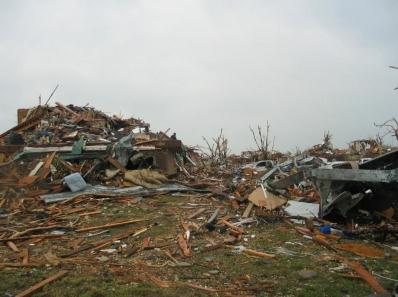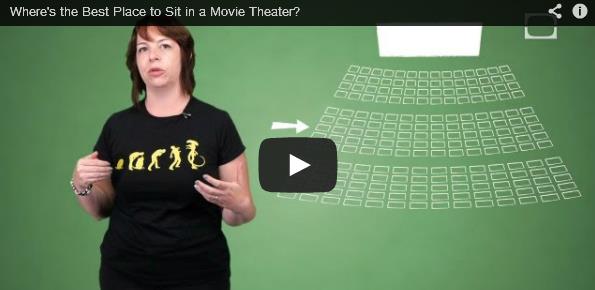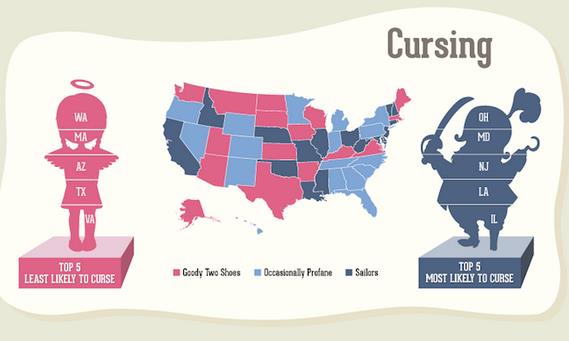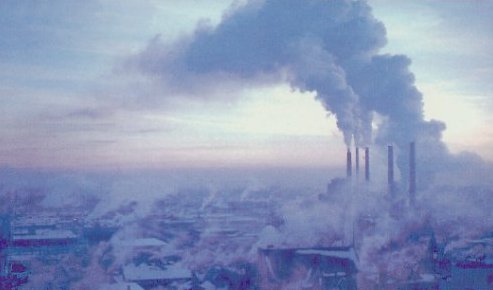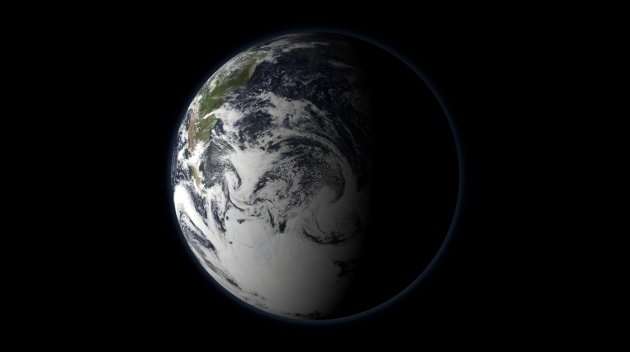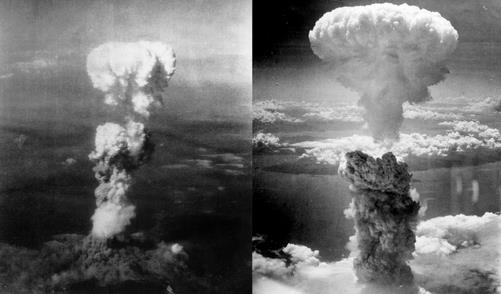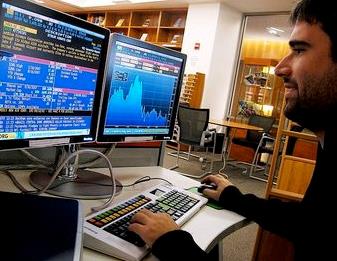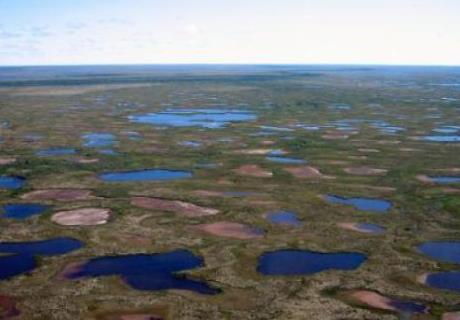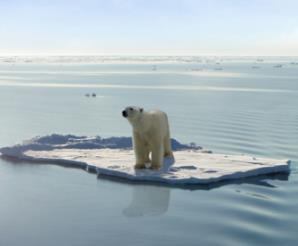The Polar Plunge
Minnesota
is about to get its cold weather boasting rights back. Winters have
been trending wimpier over time - but every now and then we get whacked.
Prepare for a significant whacking.
Then again this is the price
we pay for living in paradise. California gets earthquakes - hurricanes
torment the Gulf and East Coast - tornadoes terrorize the Great Plains.
At least Siberian air leaves our homes intact and upright, it's
shivering inhabitants suddenly counting the days until spring. An
inconvenience, but no need to call out the National Guard.
Why is
MSP always on the EDGE of big snows? An icy mix triggered by a thin
layer of above-freezing air aloft may keep snowfall amounts down - but a
plowable accumulation of 1-3 inches is still possible; much more north
of the metro. This will be a snowmobile-worthy snowfall up north; up to 2
feet for the North Shore of Lake Superior.
Today's burst of ice
& snow marks the leading edge of frigid air. The next week will
bring 5 subzero nights, in fact daytime highs may hold below zero
Saturday, again Tuesday of next week. A few more inches of snow may fall
late Sunday into Monday.
Before you consider moving in with Uncle Earl in Naples, long-range guidance shows 20s (above zero!) later next week.
Gasp.
High Resolution WRF Model.
The 00z run of the 4km WRF (above), courtesy of the Twin Cities
National Weather Service, shows a 2-4" range across the metro, 1-2"
south metro, closer to 3-4" north metro, with some 6-8" amounts closer
to Brainerd and Wadena.
Tight Snowfall Gradient.
The NAM model shows as much as 5-6" over the northern suburbs, which is
possible, if we don't see sleet or freezing rain mixing in this
morning. As much as 15-20" or more may plaster the North Shore of Lake
Superior. The ski buffs up at Lutsen have to be smacking their lips.
Fresh Minnesota Powder. Map: NOAA and Ham Weather.
A Whole New Level Of Cold.
Think this is cold? Not really, not compared to how it's going to feel
by Friday as one of the coldest airmasses in a decade plows south of the
border. I suspect highs may hold in low single digits Friday, possibly
not rising above 0F on Saturday before slight recovery on Sunday. The
solid green line marks the location of the 0F isotherm, the red line is
the freezing line. Oh to be only freezing. Map: NOAA NAM and Ham
Weather.
One Unpleasant White Spot. Here's a graphic and comment I received from Dean DeHarpporte, a consulting meteorologist here in the Twin Cities: "
Paul,
I cant resist sharing with you this GFS 850mb prog for next Tuesday
Dec. 10, at 12Z. I cant remember ever seeing a white color on this map,
which is the coldest color classification available (- 30C). The fact
that it is centered directly over Minnesota is quite astounding." (map: College of DuPage).
A Few Record Lows?
ECMWF guidance from weatherspark (above) shows double-digit subzero
lows Friday, Saturday and again next Tuesday morning. The "Euro" may be
overdoing the cold a bit, but I suspect it has the right idea. Which
brings up a metaphysical question: can you feel any colder than numb?
Teens will feel good by the middle of next week. Only in Minnesota could
the weatherguy get away with saying that.
Warming Signal Third Week of December?
The AO (Arctic Oscillation) is a fairly reliable leading indicator of
future temperature trends. I'm oversimplifying a bit, but when it's
positive much of the USA trends milder, when it's negative we cool down.
You can see the sharp drop in the AO over the next week, coinciding
with truly bitter air, but it blips upward by December 15-16, suggesting
some moderation. Then again, it can't get much colder. Chart: NOAA.
A Reason To Keep On Going.
GFS guidance seems to confirm the AO signal mentioned above; highs
reaching the 30s to near 40 (above zero!) after December 17. Hang in
there - it won't stay Nanook for the entire month of December.
Bitter Outbreaks In A Warming World.
How on Earth can we get arctic "invasions" if the atmosphere is
warming? It's a good question. Nature rarely moves in a perfectly
straight line, and that certainly applies to the atmosphere. As one
climate scientist told me recently "if we ever get to the point where we
don't see cold fronts or snow we'll be too far gone to do anything
about climate change." The reality: in spite of a warmer atmosphere
(globally) and rapidly warming oceans, bitter air will still find its
way into the USA when prevailing jet stream wind patterns are favorable.
As they will be over the next week or so. We focus on the coming cold
wave and cold vs. warm weather records for the USA in today's edition of
Climate Matters: "
WeatherNation
Chief Meteorologist Paul Douglas looks at the coming cold snap for the
United States and shows the bigger picture of the overall warming
trends. This is the first time in 20 years that there were more cold
weather records than warm weather records, and how does it play into the
overall climate picture?"
Federal Agency Releases Joplin Tornado Study.
No building will ever be tornado-proof, but how can we strengthen
national building codes to make commercial and residential buildings
more tornado-resistant? Here's a clip from
The Washington Post: "...
The
overarching conclusion of our two-year study is that death and
destruction from tornadoes can be reduced,” said Eric Letvin, the
institute’s director of disaster and failure studies. “Our scientific
understanding of tornadoes and their effects has matured substantially,”
he added. “It’s time to begin developing and implementing nationally
accepted standards and codes that directly address tornado hazards.” The
May 2011 Joplin tornado killed 161 people and destroyed thousands of
buildings, including homes, churches, businesses big and small, and one
of the city’s two hospitals. The study found that all but 26 of the
deaths came from building collapses..." (Images above: NOAA).
America's Southern States, From Sunbelt To Stormbelt. Here's a clip from a photo essay at
The Guardian: "
When
Robert Leslie first visited the US as a child in the late 1960s, it was
the world's most productive country, driven by the sunbelt stretching
across the south from Florida to California. Stormbelt
is a collection of photographs taken between 2009 and 2012, when Leslie
returned to the region. What he found was an area battling not just the
economic recession, but also natural disasters such as hurricanes,
forest fires and drought. Caption text by Edward Burtynsky."
In A Tornado, What Would You Run To Save?
The most likely answer: the things that can't be replaced: photo
albums, family heirlooms, your children (!) - the list goes on. This is
one (of many) good reasons to back up your photos in the cloud, just in
case. Here's an excerpt of a press release at
Digital Journal that got me thinking (it hurt my brain so I stopped): "
We've
all asked ourselves the question: Should we ever be confronted with a
natural disaster - a tornado, a hurricane, a flood - what is the one
thing we'd go for that would give us solace, were we to lose everything?
Most often, the answer would be: The photographs. It's a universal
sentiment that has found its way into "Running for Photographs," a
heartrending music video featuring family photos and keepsakes that were
scattered hundreds of miles across the states and discovered in the
aftermath of the recent tornadoes that pounded the Midwest. Dedicated to
storm victims everywhere and to all those who help, the music video is
posted on YouTube at http://youtu.be/71XBxHCk-kE..."
The Accidental Birth Of Wrapping Paper. Who knew? The folks at
Mental Floss - proving that some of the best inventions are accidental. Here's a clip from a recent story: "
Stationery
purveyors J.C. and Rollie Hall ran into a problem during the 1917
holiday season: Business had been too good at their Kansas City, Mo.,
shop, and they’d run out of the white, red, and green tissue papers that
were the era’s standard gift dressing. Poking around the shop, Rollie
realized they still had a stack of fancy French paper meant for lining
envelopes. On a lark, he placed the lining paper in a showcase and
priced it at 10 cents a sheet. The paper sold out instantly..."
Music Lessons Boost Emotional, Intellectual Development. Yes, try to get your kids or grandkids to play an instrument - any instrument will due! Here's a clip from
Pacific Standard Magazine: "
There is no longer any doubt that student musicians perform better than their peers on a variety of measures, including getting better grades. But the chicken-and-egg question
lingers: Is this effect due to their musical training? Or are sharper,
more motivated kids more likely to take up an instrument? While it
doesn’t provide a definitive answer, new research from Germany presents evidence that improved academic performance truly is a result of musical training..."
Which Seat Should You Pick At The Movie Theater? Finally, some news you can use. It's pretty intuitive, but it's nice to see some scientific validation.
Smithsonian.com has the story and video clip; here's an excerpt: "...
As
Holly Frey explains in this Brain Stuff video, these days theaters are
pretty good at giving every seat a passable view. This wasn’t always the
case. Theaters used to be build with a much smaller slope in the
seating area, so you were simply sitting very slightly higher than the
movie-goers in front of you, rather than in stadium seating. But as Frey
points out, what you’re really worried about when you pick a seat isn’t
the screen or the people in front of you—it’s the speakers. According
to Frey, the audio sweet spot is 2/3 back and in the middle. That’s
where audio engineers sit to balance the sound, and where you’ll get the
full effect of the chopper buzzing by or the building exploding..."
The "Sweariest" States In The USA? Wait, Wisconsin is one of the least courteous states in the USA? Really? Here's an excerpt from a story at
The Atlantic: "...
A
new map, though, takes a more complicated approach. Instead of using
text, it uses data gathered from ... phone calls. You know how, when you
call a customer service rep for your ISP or your bank or what have you,
you're informed that your call will be recorded? Marchex Institute, the data and research arm of the ad firm Marchex, got ahold of the data that resulted from some recordings,
examining more than 600,000 phone calls from the past 12 months—calls
placed by consumers to businesses across 30 different industries. It
then used call mining technology to isolate the curses therein,
cross-referencing them against the state the calls were placed from..."
Map credit: Marchex.
Climate Stories....
Panel Says Global Warming Carries Risk Of Deep Changes. It's the unknown unknowns that keep scientists up at night. Here's an excerpt from a Justin Gillis article at
The New York Times: "...
It cited the outbreak of mountain pine beetles
in the American West and in Canada. The disappearance of bitterly cold
winter nights that used to kill off the beetles has allowed them to
ravage tens of millions of acres of forests, damage so severe it can be
seen from space. Likewise, a drastic decline of summer sea ice
in the Arctic has occurred much faster than scientists expected. The
panel warned that Arctic sea ice could disappear in the summer within
several decades, with severe impacts on wildlife and human communities
in the region, and unknown effects on the world’s weather patterns.
Among the greatest risks in coming years, the panel said, is that
climate change could greatly increase the extinction rate of plants and
animals, essentially provoking the sixth mass extinction in the earth’s
history..."
The Climate Bomb Redux.
It's hard to wrap your head around how much additional heat energy
Earth's atmosphere and oceans are retaining due to a sharp spike in
greenhouse gases. This story at
Discover Magazine tries to provide some perspective; here's an excerpt: "
Imagine
four atomic bombs like the one that incinerated Hiroshima, Japan on
Aug. 6, 1945 exploding in the atmosphere every single second of every
day of every week and every month, year after year, ad infinitum. That,
says John Cook and colleagues at the web site Skeptical Science, is a
good way to understand the excess heat that is building up in the
atmosphere as a result of humankind’s emissions of carbon dioxide and
other greenhouse gases. Four atomic bombs’ worth of extra energy, every
second..."
Photo credit above: "
Mushroom clouds
blossom over Hiroshima (left) and Nagasaki (right) from atom bombs
dropped by the United States on August 6 and 9, 1945." (Source: Wikimedia Commons).
Bloomberg LP Launches First Tool That Measures Risk Of "Unburnable Carbon" Assets.
InsideClimate News has the story - here's the introduction: "
In
a move that underscores Wall Street's growing unease over the
business-as-usual strategy of the world's fossil fuel companies, Bloomberg L.P.
unveiled a tool last week that helps investors quantify for the first
time how climate policies and related risks might batter the earnings
and stock prices of individual oil, coal and natural gas companies. The
company's new Carbon Risk Valuation Tool
is available to more than 300,000 high-end traders, analysts and others
who regularly pore over the stream of information that's available
through Bloomberg's financial data and analysis service. The move
significantly broadens and elevates the discussion of "stranded" or
"unburnable" carbon reserves—expanding it beyond climate groups and
sustainability investors to the desks of the world's most active and
influential investors and traders..."
Photo credit above: "
Bloomberg
LP is now offering a Carbon Risk Valuation Tool through its terminal
subscription service (seen here), which is available to more than
300,000 high-end traders, analysts and others." Credit: CUNY Graduate School of Journalism.
Subarctic Lakes Are Drying Up At A Rate Not Seen In 200 Years. Here's a clip from
Science Daily: "...
The
drying of some lakes, which first became visible to the naked eye in
2010, was even more pronounced in summer 2013. "With this type of lake,
precipitation in the form of snow represents 30% to 50% of the annual
water supply," explained the study's lead author, Frédéric Bouchard, a
postdoctoral fellow at Université Laval's Department of Geography and
the Centre for Northern Studies. The kind of desiccation seen by the
researchers is without precedent in 200 years. Isotopic analyses
conducted on the remains of phytoplankton accumulated in lakebed
sediment show that the lakes have maintained water balance for 200
years. This stability was abruptly disrupted a few years ago..."
Photo credit above: "
Desiccated
lakes in Wapusk National Park near Churchill, Manitoba (Canada) are
shown. Desiccation of shallow lakes has occurred recently in response to
lower-than-average snowmelt runoff. This phenomenon appears
unprecedented over the last 200 years." (Credit: Hilary White).
Here's How Climate Change Will Ruin Your Winter Vacation.
Snowfall amounts have become more erratic in recent winters,
nationwide. Some winters are great, but the majority leave skiers and
snowmobilers frustrated. Here's an excerpt from a story at
The Huffington Post: "...
The
effects of climate change can be easy to miss for some, but for ski
resorts that depend on natural snowfall for their businesses -- which
are increasingly having to invest in snowmaking technology due to a lack
of natural snow -- the changing global climate is impossible to ignore.
A new report from geosciences journal Hydrology and Earth System Sciences
may bolster some resort's fears of a shrinking ski season suggesting
that by 2050, mountains in the Upper Colorado River Basin -- which
stretches across Wyoming, Utah, Colorado, New Mexico and Arizona --
could cause the spring thaw to occur as many as 6 weeks earlier than
usual because of global warming and the occurrence of extreme dust
events in the region..."
Republicans Use Bible To Deny Man-Made Global Warming. Here's an excerpt from
Opposing Views: "
While
oil and energy companies have poured millions into climate change
denial, some Republicans have laid claim to a higher power in their
denial of man-made global warming. In a video (below) created by ClimateDesk.org,
four Republicans cite verses in the Bible to claim that man-made global
warming does not exist, even though it's never actually mentioned in
the Bible. Rep. John Shimkus (R-IL), Rep. Joe Barton (R-TX), Sen. James
Inhofe (R-OK) and former Republican presidential candidate Rick Santorum
(who also opposes birth control) all deny climate change based on their bizarre interpretations of the Bible..."

